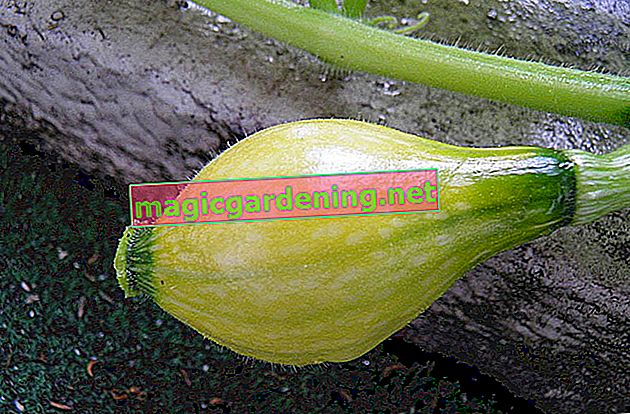
What does 'skimming' actually mean?
Every pumpkin plant strives to branch out further and further. For this purpose, it regularly forms new shoots in its leaf axils. Since only a limited amount of energy is available, the plant distributes its power evenly over the constantly growing number of shoots. The result is lots of little pumpkins.
also read
- Skimming peppers - this is how to do it right
- Skinned greenhouse cucumbers? If so, then right!
- Really skinned cocktail tomatoes - or not
Now it can be in the interests of the hobby gardener to grow a large number of small pumpkins. In this case, do nothing. If your intention is to grow a few heavyweights, achieve this by eliminating or shortening excess shoots. Experts call the process 'picking out'.
Two runs per season are sufficient
Now pruning in pumpkin cultivation is nowhere near as labor-intensive as with tomatoes, for example. Whoever sees himself marching into the bed or onto the balcony every day in his mind's eye can lean back and relax. The procedure is limited to two dates:
- in June on pumpkin plants with 3 to 5 leaves, shorten each shoot to 2 leaves
- in July again maxed out above the fifth or sixth leaf
- only leave as many female flowers on the plant as pumpkins are desired
In addition, after successful pollination, all male flowers should be cut off so that they do not consume any plant energy. Male flowers can be recognized by the fact that they have no fruit set.
The first female flower has been exhausted for a giant pumpkin
If you are aiming for a record pumpkin, every move in care revolves around strengthening the plant. Targeted skimming plays an important role in this context. Skilled pumpkin gardeners swear by removing the first female flower on each shoot. The second or third specimen at the earliest is considered to be 'the one flower'.
Tips & Tricks
Depending on the cultivated pumpkin variety, a more or less large cut occurs during the stripping process. Ideally, treat the interface immediately with charcoal ash. In this way you effectively prevent an infestation by fungal spores, viruses or pests.








